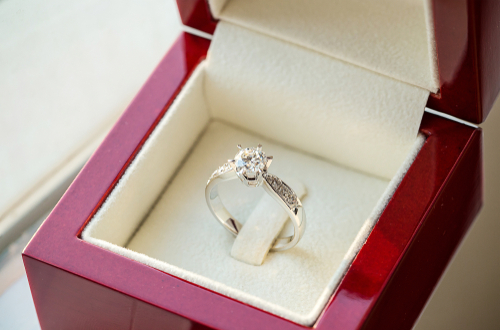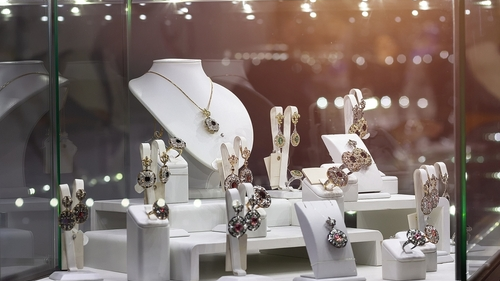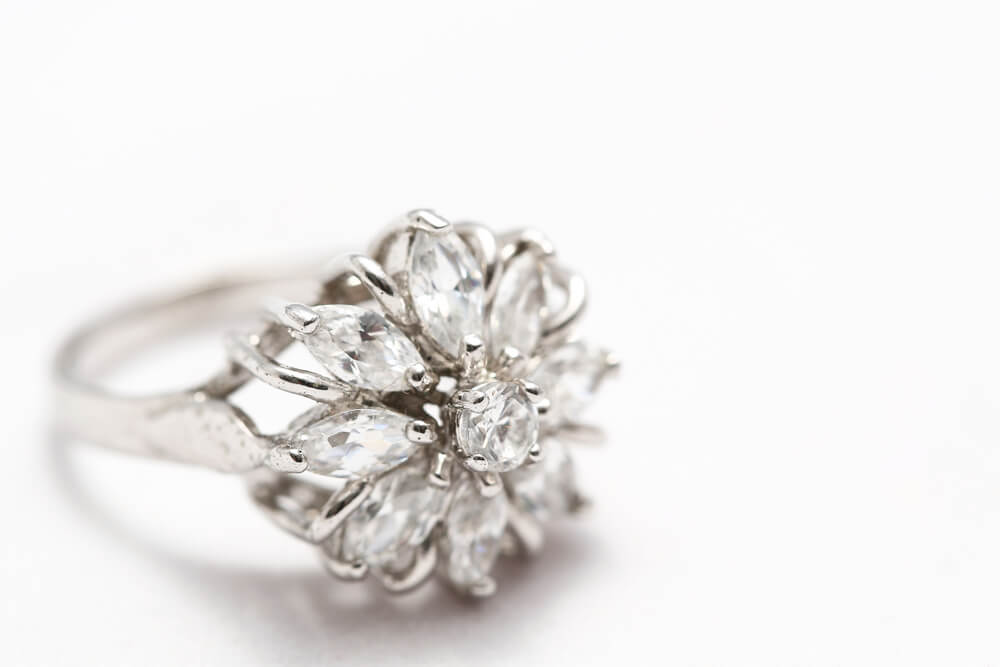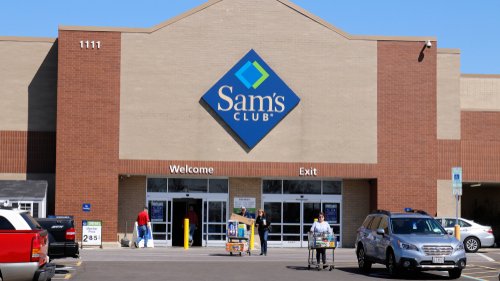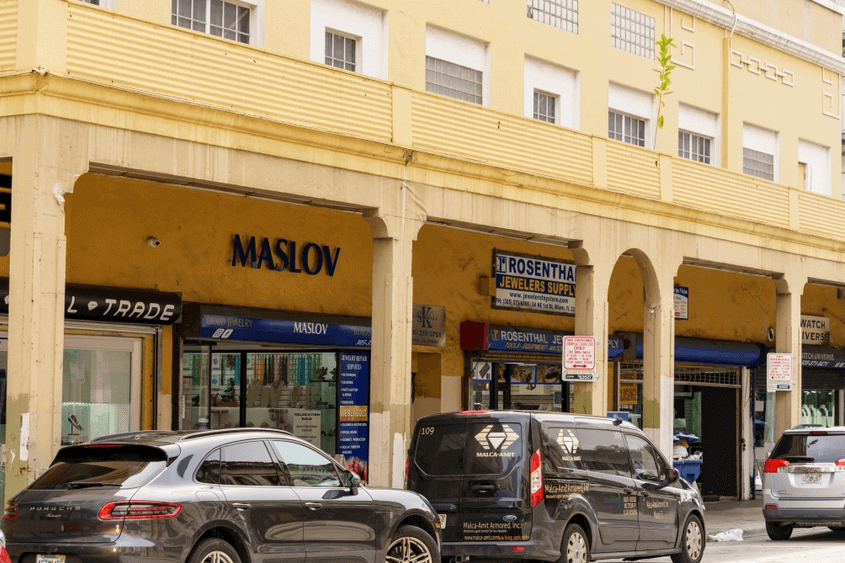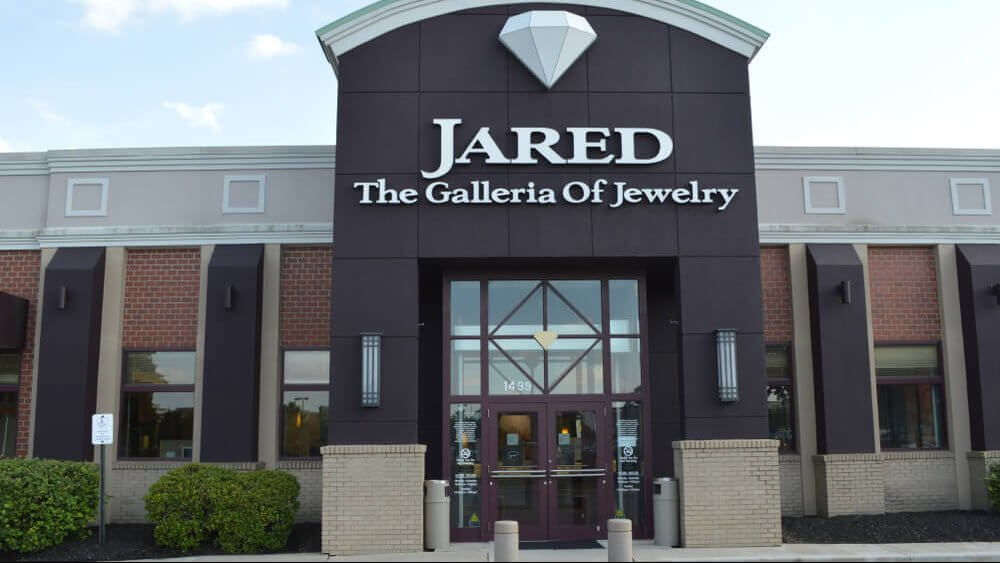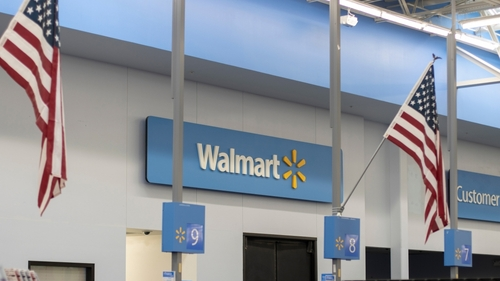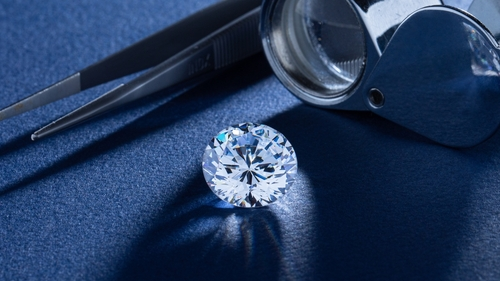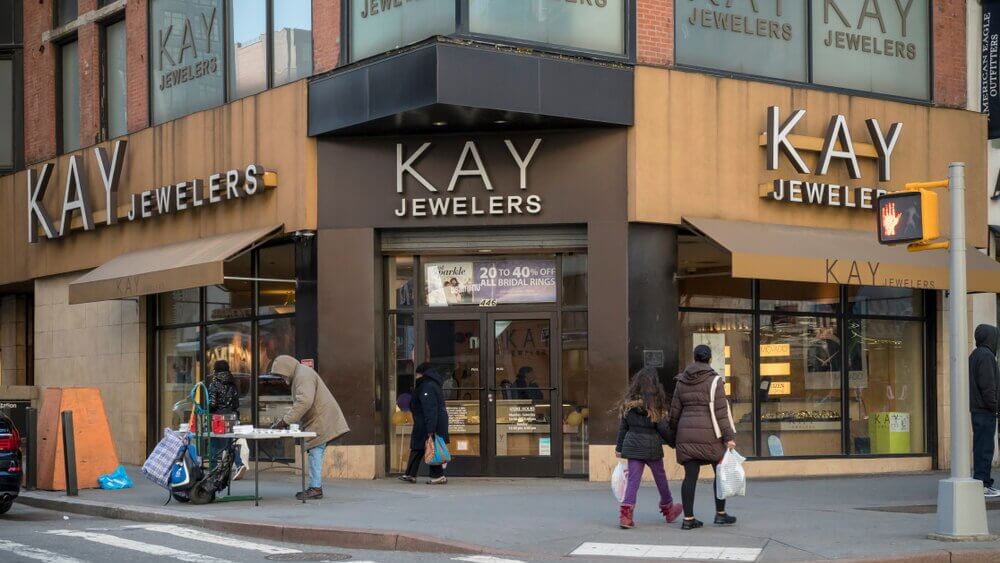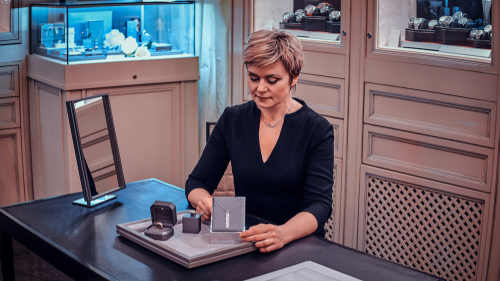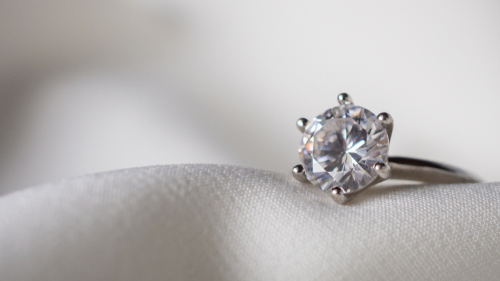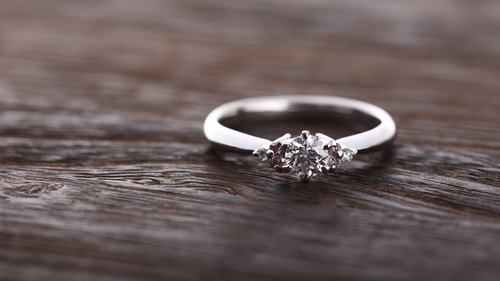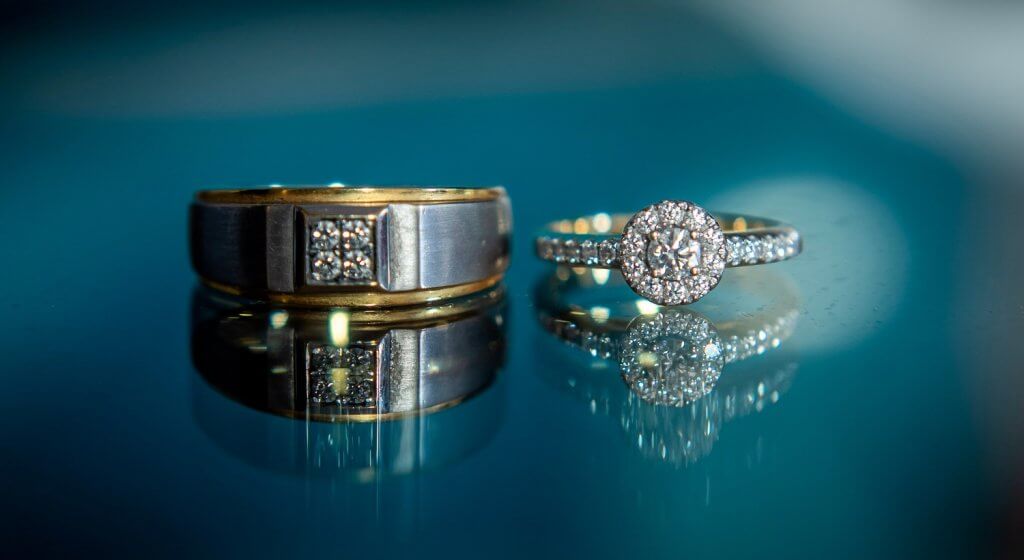78.3% Score | Rogers & Hollands: Is Their Engagement Ring Quality Worth It?

In this comprehensive review, we’ll explore:
- Our issue isn’t with Rogers Hollands’ stores. Bright, warm, and welcoming, they put forward a great impression to shoppers looking to invest in an engagement ring.
- The biggest issue, for us, with Rogers Hollands and their approach to diamond selling is a lost list of labs they rely on for grading reports.
- This means that there is a major inconsistency across their selection of diamonds, which makes it impossible for inexperienced shoppers to draw up strong comparisons between one option and another.
- Sticking to the most reputable labs – preferably the GIA or, failing that, the AGS – is the only way to feel confident that you’re making the strongest choice possible, and not overpaying on lower quality.
If you find yourself in the Northeast a lot, then you’re probably already familiar with the name Rogers and Hollands. With more than seventy locations spread across the region, and particularly in Illinois, where Chicago alone has more than ten Rogers and Hollands stores, its burgundy frontage is pretty easy to recognize.
So, when you start coming round to the idea of investing in an engagement ring, it’s pretty natural that theirs is one of the first names you think of.
In favor of addressing the elephant in the room sooner rather than later, we’re not against mall jewelry stores. There’s plenty to like, for instance, about Ben Bridge, which we’ve reviewed here, and a lot of benefits to heading out to the mall rather than going down the online shopping route.
Even still, Rogers and Hollands left a lot to be desired, and we’re not catapulting it to the top of our list anytime soon.
Our thoughts:
The positives: a welcoming atmosphere, and many years’ experience matching shoppers to the right engagement rings.
The negatives: there’s just too much risk in offering uneducated shoppers a range of diamonds, all graded by different labs – including some known for their inconsistent approach to grading.
The Brand
Rogers and Hollands began as two separate jewelers, with Hollands dating back to the early twentieth century, and Rogers Jewelers first opening its doors in the mid-century. Rogers Jewelers acquired Hollands in 1979, and has been operating as Rogers & Hollands ever since. It has also remained family-owned, giving it a pretty unique position compared with some of the other big chain jewelry stores.
They stock a number of brands we’ve reviewed in the past. For instance, Gabriel & Co., and Verragio, a distinctive brand that produces designs on a much, much larger scale than your average jeweler.
One of the most notable things about Rogers and Hollands is that, for all their years of experience in fine jewelry, they’ve yet to get very discerning about the types of diamonds they offer their customers. On their website, it’s possible to search diamonds with AGS, EGL, GCAL, GIA, GSI, HRD, or IGI certification – meaning that, unless you know enough to pick one diamond lab (hint: it’s the GIA), you’re going to be looking at a very, very inconsistent range of diamonds.
At most, we’d recommend our readers broaden their range to include AGS diamonds as well as GIA – although still favoring the GIA where possible. A range as wide as the one offered by Rogers and Hollands cannot, in our opinion, benefit the customer, since some of the labs included on that list are known for being a lot looser with their grades.
What does this mean? While you’ll pay less for an HRD diamond than you would a GIA diamond that is (on paper) comparable, they won’t be comparable in real life, and you’ll have wasted money instead.
The Experience
The one area where Rogers and Hollands really is better than the online vendors we’ve reviewed lies in the fact that they offer a physical store to their customers. Choosing Rogers and Hollands over, say, James Allen or Brilliant Earth means that you’ll get the experience of going in for a real consultation, with a real jeweler, and being able to actually see your options right there in front of you, rather than through a screen.
If you’re looking for jewelry stores local to explore similar options in your area, consider visiting a nearby jeweler where you can experience the difference firsthand.
Still, that’s the only benefit we can see to choosing Rogers and Hollands. With their inconsistent approach to diamond certification, and their range of designers is not quite what we’d expect for someone ready to spend thousands of dollars on the most important piece of jewelry they will ever invest in.
The Cost
Rogers and Hollands sits in the middle of the road in terms of price, although you’ll probably notice a fair amount of discrepancy between diamonds since some will be worth more, thanks to their GIA reports, and others less as a result of a report from a lesser lab.
Rogers and Hollands is not a luxury brand, so there’s no ‘blue box’ pricing phenomenon, but the fact that they’re a pretty prominent, easily recognizable brand in a number of states means that shoppers will find it easier to trust them. They’ve got a stable reputation and, unfortunately, uneducated shoppers could all too easily make it to the checkout without realizing how poor a choice that EGL or HRD diamond is, compared with the more expensive GIA diamond.
FAQ
Any other questions, answered.
What is Rogers and Hollands?
A prominent jewelry store operating more than seventy stores in the US.
It’s not so well known outside of the Northeast, but still a big name regardless.
Is Rogers and Hollands Legit?
Yes, Rogers and Hollands is a legitimate jewelry store.
We’re not excited about the sort of experience they’re offering to their customers, but you’re certainly not putting yourself at risk of getting scammed or sold a fake by choosing to shop with them. There’s every chance you could find a beautiful and fairly priced diamond with them, but you’ll need to narrow down that list of options quite substantially first.
Who Owns Rogers and Hollands Jewelry?
It remains a family-owned company.
This is one thing that set it apart from other notable chain stores, like Zales and Kay Jewelers.
Is Rogers Jewelers Going Out of Business?
No, Rogers Jewelers is still thriving across the Northeast.
True, there’s more competition than ever before – particularly with the prominence of certain online vendors – but there will always be a lot of demand for jewelers who can provide a highly personalized level of service.
Our Summary
While we’re always on the side of the bricks-and-mortar jewelry store, there are a few things about Rogers and Hollands that we find hard to see past.
For the most part, this boils down to some potentially major differences in diamond quality. You just can’t compare the quality or value of a selection of GIA certified diamonds, and a selection interspersed with diamonds graded by labs known for their inconsistencies, and, in some cases, less scrupulous approaches to protecting customers from a bad deal.
We consider GIA or AGS certification to be a total non-negotiable for shoppers – and, though both of these categories are available at Rogers and Hollands, there is just too much room for error.
Rogers & Hollands Jewelers Overall Sentiment and Positivity Score – 78.3%
As part of our comprehensive review, we’ve reviewed an extensive dataset of 6,864 customer feedbacks from across the web to create a Positivity Score for Rogers & Hollands jewelers. This score represents the percentage of positive reviews for each of Rogers & Hollands’ 49 locations, reflecting the real experiences of shoppers nationwide. We averaged all scores into a Grand Positivity Score. The Grand Positivity Score for the entire chain stands at 78.3%, offering insight into the general customer satisfaction levels at their stores.
To help you make a more informed decision, we’ve compiled a detailed list of each Rogers & Hollands store and its individual score. Explore the rankings below to find out how your local Rogers & Hollands measure up.
Rogers and Hollands Jewelers Store Directory: Locations and Sentiment Scores Per Store
- Rogers & Hollands Jewelers 390 Chicago Ridge Mall – Chicago Ridge IL – 82.50%
- Rogers & Hollands Jewelers 164 East Towne Mall Suite 614 – Madison WI – 74%
- Rogers & Hollands Jewelers 1600 Mid Rivers Mall – Saint Peters MO – 92.50%
- Rogers & Hollands Jewelers 2201 Southlake Mall – Merrillville IN – 70%
- Rogers & Hollands Jewelers 201 West Towne Mall Suite A1a – Madison WI – 90%
- Rogers & Hollands Jewelers 5 Woodfield Mall – Suite E135 – Schaumburg IL – 65.50%
- Rogers & Hollands Jewelers – Ashwaubenon WI – 67.50%
- Rogers & Hollands Jewelers Brookfield Square – Brookfield WI – 70%
- Rogers & Hollands Jewelers – Burnsville MN – 72%
- Rogers & Hollands Jewelers Castleton Square – Indianapolis IN – 82.50%
- Rogers & Hollands Jewelers CherryVale Mall – Rockford IL – 77.50%
- Rogers & Hollands Jewelers College Mall – Bloomington IN – 85.50%
- Rogers & Hollands Jewelers Crossroads Center – Saint Cloud MN – 90%
- Rogers & Hollands Jewelers Eastland Mall – Bloomington IL – 86.50%
- Rogers & Hollands Jewelers Fox River Mall – Appleton WI – 85%
- Rogers & Hollands Jewelers – Aurora IL – 70%
- Rogers & Hollands Jewelers Franklin Park Mall – Toledo OH – 70%
- Rogers & Hollands Jewelers Genesee Valley Center – Flint MI – 75.50%
- Rogers & Hollands Jewelers Glenbrook Square – Fort Wayne IN – 82.50%
- Rogers & Hollands Jewelers Greenwood Park Mall – Greenwood IN – 70%
- Rogers & Hollands Jewelers Harlem Irving Plaza – Norridge IL – 72.50%
- Rogers & Hollands Jewelers – Vernon Hills IL – 75%
- Rogers & Hollands Jewelers Janesville Mall – Janesville WI – 70%
- Rogers & Hollands Jewelers Laurel Park Place – Livonia MI – 75%
- Rogers & Hollands Jewelers Market Place Shopping Center – Champaign IL – 80%
- Rogers & Hollands Jewelers Mayfair Mall – Wauwatosa WI – 62.50%
- Rogers & Hollands Jewelers Meridian Mall – Okemos MI – 80%
- Rogers & Hollands Jewelers Northwoods Mall – Peoria IL – 80%
- Rogers & Hollands Jewelers Oakwood Mall – Eau Claire WI – 67.50%
- Rogers & Hollands Jewelers – Orland Park IL – 77.50%
- Rogers & Hollands Jewelers River Hills Mall – Mankato MN – 69%
- Rogers & Hollands Jewelers – Calumet City IL – 82.50%
- Rogers & Hollands Jewelers RiverTown Crossings – Grandville MI – 79.50%
- Rogers & Hollands Jewelers Rosedale Center – Roseville MN – 82.50%
- Rogers & Hollands Jewelers – Saint Louis MO – 80%
- Rogers & Hollands Jewelers Southridge Mall – Greendale WI – 77%
- Rogers & Hollands Jewelers – Fairview Heights IL – 87%
- Rogers & Hollands Jewelers – Bloomingdale IL – 82.50%
- Rogers & Hollands Jewelers The Crossroads – Portage MI – 87.50%
- Rogers & Hollands Jewelers The Lakes Mall – Muskegon MI – 87%
- Rogers & Hollands Jewelers Tippecanoe Mall – Lafayette IN – 90%
- Rogers & Hollands Jewelers University Park Mall – Mishawaka IN – 82.50%
- Rogers & Hollands Jewelers Valley View Mall – La Crosse WI – 70%
- Rogers & Hollands Jewelers – Skokie IL – 80%
- Rogers & Hollands Jewelers Westwood Mall – Jackson MI – 82.50%
- Rogers & Hollands Jewelers White Oaks Mall – Springfield IL – 82.50%
- Rogers & Hollands Jewelers – Lombard IL – 90%
- Rogers & Hollands Jewelers 245 Apache Mall – Rochester MN – 82.50%
- Rogers & Hollands Jewelers Woodland Mall – Kentwood MI – 67.50%
Note:
The insights provided in this review are drawn from publicly available data, customer reviews, and expert analysis. Our goal is to offer a balanced perspective to help buyers make informed decisions.
This site is not affiliated with or endorsed by Rogers and Hollands Jewelers. All information is based on publicly available data and independent evaluations. Logos and trademarks belong to their respective owners and are used for informational purposes only.
Readers are encouraged to verify all details with the retailer directly before making a purchase.



